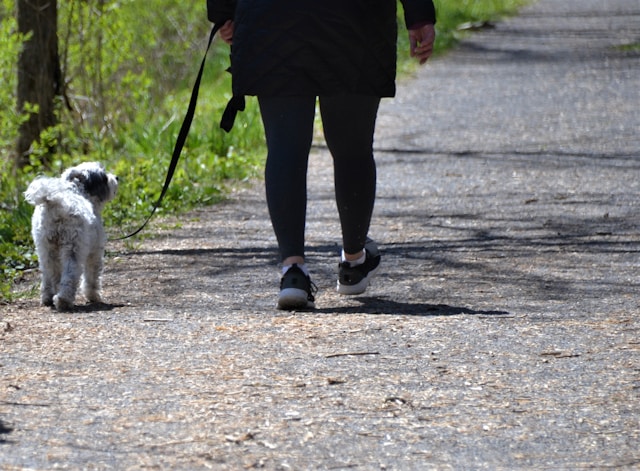Healing Burnout
Burnout is an increasingly common challenge in today’s fast-paced, high-pressure world. This state of emotional, mental, and physical exhaustion arises from prolonged exposure to stress, often leading to profound consequences for personal health, relationships, and overall quality of life. For those in caregiving roles, the stakes are even higher. Nurses, for instance, frequently navigate environments that test their resilience, compassion, and stamina daily.
The demands of caregiving roles, coupled with long hours and intense emotional strain, can accumulate over time, pushing even the most dedicated professionals to their limits. Nurses often find themselves caught between the desire to serve others and the need to safeguard their own wellbeing. Left unchecked, this imbalance can spiral into burnout, leaving us feeling disconnected and overwhelmed.
This post explores the realities of burnout through the lens of one nurse’s experience, offering insights into resilience, self-care, and the power of reconnecting with purpose. Whether you’re grappling with burnout yourself or supporting others in high-pressure roles, these reflections and strategies aim to inspire a healthier, more sustainable approach to work and life.
Nurturing Resilience on the Frontlines
Jenn Johnson, RN, is a beacon of strength and compassion in the nursing community. With over 16 years of experience in emergency rooms across Ontario, Canada, Jenn has navigated the intense pressures of the profession with unwavering dedication.

From life-and-death moments to the daily struggles of coping during the pandemic, Jenn has witnessed the toll nursing can take. But through it all, she has remained committed to supporting her fellow nurses. As an advocate for nurse wellbeing, Jenn has channeled her experiences into her book, Nursing Intuition, offering insights for reconnecting with the love of nursing and cultivating resilience. Beyond her work, Jenn brings the same compassion she offers her patients to her roles as a wife and mother. Her journey is a testament to the power of nurturing one's own resilience while extending that support to others—a shining example of healing from the inside out.
Understanding Burnout
Burnout is not merely a fleeting sense of exhaustion or stress—it is a chronic condition that deeply impacts every aspect of life. It is marked by a pervasive sense of emotional depletion, physical fatigue, and detachment. Over time, it can lead to feelings of inadequacy and an inability to cope with even routine responsibilities.
Signs and Symptoms
Burnout manifests through physical, emotional, and behavioral symptoms. Physical indicators include persistent headaches, gastrointestinal issues, and disrupted sleep patterns. Emotionally, we may feel apathetic, detached, or irritable, with a reduced sense of accomplishment. Behavioral changes can involve withdrawing from responsibilities, procrastinating, or neglecting important tasks.
These symptoms don’t emerge overnight—they creep up gradually. Recognizing them requires self-awareness and the courage to confront their presence, which is the first step in addressing the issue effectively.
Challenges Unique to Healthcare
For nurses and other healthcare professionals, burnout poses distinct challenges. The demanding nature of their work often involves extended shifts, exposure to trauma, and high-pressure environments where mistakes can carry life-or-death consequences. Adding to these pressures are understaffed teams, resource shortages, and the emotional toll of patient care.

These factors not only affect personal wellbeing but also have wider implications for healthcare organizations. Burnout in nurses often leads to medical errors, declining patient satisfaction, and increased staff turnover, creating a vicious cycle of strain and inefficiency.
The Ripple Effects
Burnout’s impact extends beyond the individual to affect workplace dynamics, patient outcomes, and organizational stability. Exhausted caregivers are less likely to perform at their best, and their stress can influence the morale of their teams. Additionally, organizations bear the cost of increased turnover and diminished patient trust.
Addressing burnout, therefore, is a shared responsibility that requires systemic change in how we view and support those in caregiving professions.
The Journey of Healing
Healing from burnout is a deeply personal process that begins with acknowledging its presence and taking deliberate steps toward recovery.
Recognizing Burnout
Acknowledging burnout is the first and often hardest step in the healing process. Because symptoms develop gradually, they can be difficult to pinpoint. Regular self-assessments, honest conversations with trusted colleagues, and seeking feedback from loved ones can help us identify the early signs.
Once burnout is recognized, creating space to reflect on its underlying causes is essential. For nurses, this might mean examining workplace dynamics, personal boundaries, or even career paths to understand what changes are necessary for recovery.
Reconnecting with Purpose
Burnout often arises from a disconnection between one’s work and its deeper purpose. For nurses, reconnecting with the "why" behind their profession can be a transformative step. Reflecting on meaningful patient interactions or recalling the moments that reaffirmed their passion can reignite motivation.

This process might also involve seeking mentorship or exploring new roles within healthcare that align with personal values. Whether it’s pursuing further specialization or taking on a leadership role, finding purpose can reinvigorate one’s sense of fulfillment.
The Importance of Self-Care
Self-care is not a luxury but a necessity for caregivers. Prioritizing sleep, nutrition, and physical activity is foundational to maintaining physical and mental health. Beyond these basics, self-care includes setting boundaries to protect time and energy for personal wellbeing.
Engaging in hobbies, connecting with loved ones, or seeking professional counseling are equally vital components of recovery. By embracing self-care, caregivers can rebuild their capacity to support others without sacrificing their own health.

Building Resilience
Resilience is the ability to bounce back from challenges, and it plays a key role in managing stress and avoiding burnout. Developing a growth mindset, which views setbacks as opportunities for learning, can be a powerful tool. Mindfulness practices such as meditation or journaling can help manage day-to-day stress and build emotional strength.
Building a strong support network is also essential. Leaning on colleagues, friends, and family for encouragement and understanding provides a sense of connection and shared experience. Celebrating successes—no matter how small—can further reinforce confidence and motivation.
The Healing Power of Nature
Nature has a unique ability to restore balance and calm to our overstimulated minds. Spending time outdoors, even in small doses, can significantly aid in the healing process for those experiencing burnout. The act of immersing oneself in natural surroundings helps to reduce stress hormones, improve mood, and foster a sense of clarity.

Research shows that activities like walking in a park, gardening, or even sitting quietly in a natural environment can have profound mental and physical health benefits. These moments allow caregivers to step away from their intense work environments and reconnect with the simplicity and beauty of the natural world. This break from constant demands offers a mental reset and can spark new perspectives on challenges.
Incorporating nature into daily routines doesn’t require a dramatic lifestyle change. It might mean taking a lunch break outside, cultivating indoor plants, or scheduling a weekend hike. These small, consistent interactions with nature can become a cornerstone of healing, offering peace and grounding in an otherwise hectic life.
The Role of Creativity in Recovery
Creative expression is a powerful but often underestimated tool for healing burnout. Engaging in artistic activities—whether painting, writing, music, or crafts—provides an outlet for processing emotions and reconnecting with a sense of self beyond professional roles. Creativity can be particularly cathartic for caregivers, offering a way to channel stress and rediscover joy.
Making time for creative pursuits doesn’t require expertise or extensive effort. The value lies not in the final product but in the process itself. A simple sketch, a poem, or a few minutes of freewriting can unlock emotions that are hard to articulate, creating space for reflection and release.

Moreover, creativity fosters a sense of autonomy and playfulness, which are often suppressed in high-pressure roles. By allowing yourself to explore and create without judgment, you tap into a wellspring of energy and inspiration that can support long-term recovery and personal growth.
EMBRACING STILLNESS AND REFLECTION
In the hustle and urgency of caregiving roles, stillness often feels like a luxury, but it is one of the most powerful tools for healing burnout. Taking intentional moments of quiet reflection allows you to tune into your thoughts and emotions without judgment. This practice creates space to process the accumulated stress of daily life and fosters clarity about what truly matters.
Stillness can take many forms—meditation, deep breathing exercises, journaling, or simply sitting in silence. These practices help calm the nervous system, reduce stress hormones, and cultivate a sense of inner peace. Over time, regularly incorporating stillness into your routine can become a grounding ritual that anchors you amid the chaos of work and life.

Reflection also provides an opportunity to assess your priorities and realign your actions with your values. By pausing to ask questions like, "What do I need most right now?" or "What can I let go of?" you empower yourself to make choices that support your wellbeing. In this way, stillness becomes not just a reprieve but a transformative act of self-care.
The TAKEAWAY
Burnout is a significant and complex issue, especially in caregiving roles like nursing, where emotional and physical demands are unrelenting. Addressing this challenge requires both individual action and systemic change. The journey begins with recognizing burnout and committing to meaningful self-care and recovery practices. For organizations, creating supportive environments that prioritize employee wellbeing is essential for sustainable caregiving.
Healing from burnout is not merely about addressing its symptoms but understanding its deeper roots. It involves reconnecting with purpose, cultivating resilience, and embracing the idea that rest and renewal are not weaknesses but strengths. This shift in mindset is vital for fostering a culture where caregivers feel valued, supported, and capable of thriving.

Ultimately, sustaining yourself is the key to sustaining others. By prioritizing your own wellbeing, you not only safeguard your ability to care for others but also set a powerful example for colleagues and peers. The journey of healing burnout is about more than recovery...


